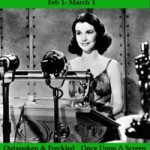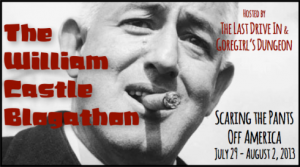Celebrating Thanksgiving with Fond Memories!
I have such fond memories of the Macy’s Day Parade from when I was a little kid… waking up early in the morning, running downstairs to the living room, and turning on the TV to see what awesome and fun balloons would be making their way down the packed streets of NYC. What a thrill it was for me to see Snoopy or Bullwinkle or Woody Woodpecker – larger than life – floating way over the heads of the crowds huddled together along the parade route. I can almost hear the marching bands playing right now
That said, in celebration of Thanksgiving Day, I thought I’d share some vintage Macy’s Day Parade photos from years gone by…
A Happy Thanksgiving to All!
…..

In 1927 (or 1931, depending on the source), Felix the Cat made his debut in the Macy’s Thanksgiving Day Parade… That said, Felix was either the first or second-ever balloon to be featured in the parade… Discrepancy aside, I think it’s fair to say that the iconic cat was a cool sight to see!
…..

In 1934, at the tender age of six, Mickey Mouse made his debut appearance at the parade, the first of many Disney balloons to ‘march’ in the parade.
…..

Well, can’t say that I would have recognized this balloon… but it’s Eddie Cantor – one of the very few balloons based on a real person. The balloon appeared in the parade in 1934 (or 1940, depending on the source).
…..

Image: © Bettmann/CORBIS
Well, maybe it’s not the Yellow Brick Road, but it only seems fitting that the Tin Man would be marching down the parade road in 1939, a few month’s after The Wizard of Oz‘s theatrical release.
…..

It’s a bird, it’s a plane… no — it’s Superman — making his Macy’s Day Parade debut in 1940. Created by Jerry Siegel and Joe Shuster, Superman originally debuted in comic books (1938), followed by a daily comic strip (1939), a series of animated theatrical shorts (1941-1943), and of course the radio show (1940-1951) and the iconic TV series The Adventures of Superman (1952 to 1958)… and that, of course, was just the beginning
…..

Image: Nick Petersen/NY Daily News Archive via Getty Images
Not to be outdone by Mickey — Mighty Mouse made his first appearance at the parade in 1951. Created as a Superman parody by Paul Terry, Mighty Mouse (originally Super Mouse) made his screen debut in theatrical animated shorts (1942-1961), which were later shown on TV (1955-1967) … Fun Fact: Paul Terry also created Heckle and Jeckle a few years later (in 1946).
…..

No one… but Donald Duck!
Donald Duck doesn’t look too happy here, following Mickey’s debut last year. Donald made his debut at the 1935 parade.
…..

Clearly Pinocchio lied (and lied and lied) to make his way into the 1939 parade. Created by writer Carlo Collodi via the 1883 book The Adventures of Pinocchio, Pinocchio’s Disney feature film debut (in which he looks MUCH better) will only be a few months away in Feb 1940…
…..

Popeye the Sailor Man made his balloon debut in the 1957 parade, decades after his original comic strip debut… First appearing in 1929 as a minor character in the Thimble Theatre comic strips, he catapulted to fame in the 1930s. In 1933, Max Fleischer released a series of Popeye the Sailor theatrical cartoon shorts for Paramount, and well, as they say, the rest is history…
…..

Hokey Smoke, now it’s time for my favorite! Bullwinkle J. Moose made his debut at the parade in 1961… Bullwinkle first hit the small screen, with best friend Rocky the Flying Squirrel, in the 1959 animated series Rocky and Bullwinkle (and/or other variants of that title). The series ran through 1964, first on ABC and then on NBC… not to mention LOTs of repeats throughout the years (thankfully for me, who couldn’t watch them when they first aired)!
…..

Fighting all who rob or plunder
There’s no need to fear –Underdog is here — at the 1965 Macy’s Day Parade. Originally created as a cartoon series by General Mill’s ad agency to sell GM’s breakfast cereals, Underdog ‘saved the day’ on TV from 1964-1973.
…..

Image: Chris Hondros/Getty Images
Everyone’s favorite beagle, Snoopy, made his parade debut in 1968 as Aviator Snoopy… In the following years, Snoopy would appear again as an astronaut, ice skater, in a Macy’s sweater, as a Flying Ace and with friend Woodstock, among others…
…..

Ho-ho-ho ho ho! Ho-ho-ho ho ho! Woody Woodpecker made his first balloon parade appearance, believe it or not, in 1982, four-plus decades after his screen debut in an Andy Panda short in 1940. Woody’s own cartoon series, The Woody Woodpecker Show, would run on ABC from 1957-1958, continuing for years after in syndication. Fun Fact: Kay Kyser‘s 1948 recording of “The Woody Woodpecker Song” was a bit hit single in 1948.
…..

he’ll have every picnic basket that’s in Jellystone Park.
Although smarter than the average bear, it took Yogi Bear a few decades as well to make it to the parade, debuting as a balloon in 1983, oddly enough sans picnic basket 
…..

Another latecomer, iconic flapper sex symbol Betty Boop, sashayed her way into the parade in 1985, a full 55 years after her 1930 cartoon debut in Max Fleischer’s Dizzy Dishes, part of his Talkartoon series.
…..

The Pink Panther made his grand entrance into the parade in 1988 in celebration of the 25th anniversary of The Pink Panther’s original film release in 1963. Of course, later came the other films in the franchise, as well as a Saturday morning cartoon series featuring the sly pink fellow in 1969…
…..

Well, we’ll close this pictorial of classic-era cartoon icons who ‘marched’ in the Macy’s Day Parade — with one of the most beloved animated celebrities of all time — everybody’s favorite wascally wabbit (mine too) — the inimitable Bugs Bunny 
…..
Would love to hear about your favorite Macy’s Day Parade balloons and Thanksgiving memories… mine always includes watching the parade AND THEN watching The March of the Wooden Soldiers on Thanksgiving Day afternoon!
…..
–Annmarie Gatti for Classic Movie Hub































































































